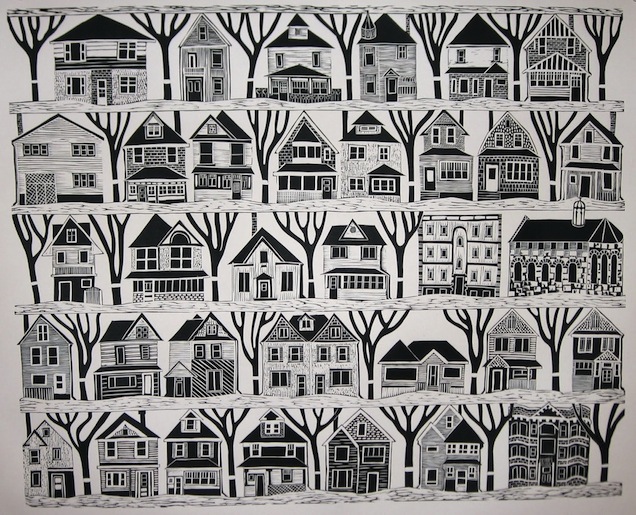There’s a natural tendency to think of the city as simply the places in it that we inhabit throughout the week: the neighbourhood we live in, work or go to school, and hang out in on the weekends. There isn’t anything wrong with this, and the more we’re able to live in a neighbourhood through it being mixed-use and walkable, the less of the rest of the city we’re going to see and experience on a regular basis.
[related_content slugs=”my-favourite-place-on-earth,downtown-buildings-are-more-than-the-opposite-of-parking-lots,lost-winnipeg-the-royal-alex,ten-best-places-to-get-a-beer-in-winnipeg” position=”right”]
The great thing about Jane’s Walk and its guided walking tours through different Winnipeg neighbourhoods is that it gives citizens the chance to experience a little more of the city than they usually would. Some of these walks will be through familiar places Winnipeggers pass down every day (Main Street, Broadway, or Osborne), while others will be places they might never have seen before (the tangled side streets of North Point Douglas, or the practically sylvan neighbourhoods of Wildwood in Fort Garry and Kildonan Drive in North Kildonan).
This year, there are perennial Jane’s Walk mainstays like Riverview, West Broadway, and North Point Douglas (the latter which I will be leading for the fourth consecutive year), but there’s also new walks, including one that focuses on Broadway’s Modern Architecture; another on the Hudson’s Bay Company’s legacy on downtown Winnipeg; and one that explores the the emerging residential neighbourhood along Waterfront Drive.
More than fifty years ago, Jane Jacobs challenged the fundamental assumptions of Modernist city planning by writing a book about cities that didn’t rely on statistical data or easy solutions, but on her own casual observations of city and streets and neighbourhoods. The book, The Death and Life of Great American Cities (1961), would be such a force not because it said what cities and neighbourhoods should be like in an ideal world, but because it looked at how they worked in a real world. Jane’s Walk gives us a chance to observe the complexity and diversity of the neighbourhoods of our own city in new ways.
***
Jane’s Walk occurs throughout the weekend of May 4th and 5th. More information can be found at the Jane’s Walk website or at the event’s Facebook page.
***
Print shown above: Miriam Rudolf, Winnipeg Neighbourhood II. 2010.
___
Robert Galston likes to write about Winnipeg, urbanism, and other very, very exciting topics. Follow him on Twitter @riseandsprawl
For more, follow us on Twitter: @SpectatorTrib
